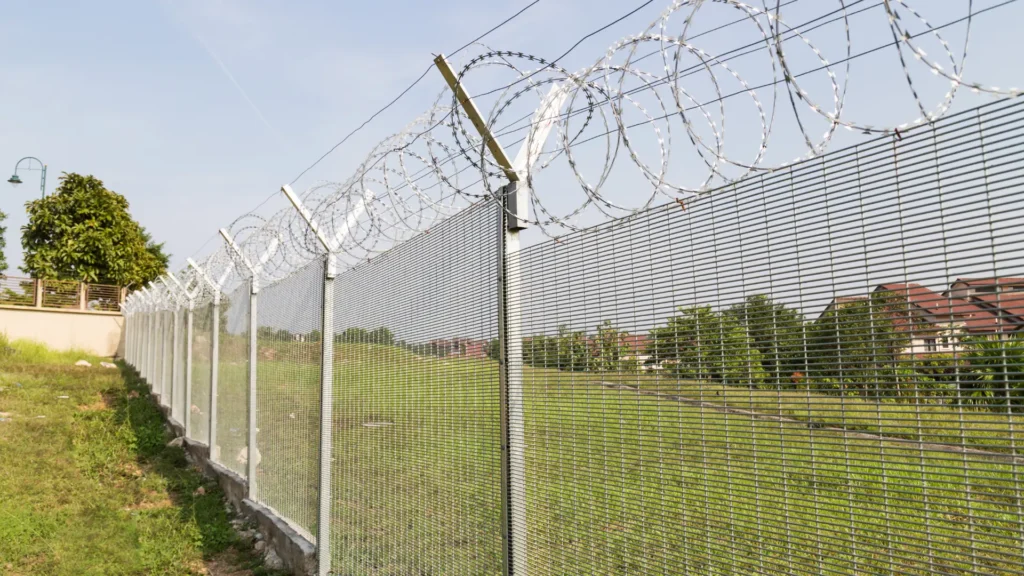Just as you invest time and resources into optimizing your supply chain, establishing a robust logistics security plan is imperative for safeguarding your operations. With an ever-evolving landscape of threats, you need to adopt best practices that not only protect your assets but also enhance your overall efficiency. This post will guide you through the key components and strategies required to develop a comprehensive logistics security plan that meets your specific needs, ensuring that your business remains resilient in the face of challenges.
Understanding Logistics Security
To effectively manage the flow of goods and information, it is necessary for you to have a solid grasp of logistics security. This involves identifying, assessing, and mitigating risks associated with the transportation and storage of your products. By ensuring comprehensive security protocols, you not only protect your assets but also preserve your brand’s reputation and customer trust.
Definition and Importance
The significance of logistics security lies in its ability to safeguard your supply chain from potential threats. It encompasses a wide array of strategies aimed at maintaining the integrity of your products during transit and storage, ensuring that your operations run smoothly and efficiently.
Key Threats to Logistics Security
With a vast network of suppliers and transportation routes, logistics security faces numerous threats that you must be aware of. These include theft, cyber-attacks, natural disasters, and insider threats that can compromise your shipments and data.
At the heart of logistics security are emerging and persistent threats that can disrupt your operations. Theft remains one of the top concerns, with criminal organizations increasingly targeting freight as a lucrative opportunity. Cybersecurity is another significant threat, as hackers are continually evolving their tactics to infiltrate your systems and steal sensitive information. Additionally, the risk posed by natural disasters, such as earthquakes or floods, can cause logistic failures, disrupting supply chains. You must also consider insider threats, where employees may intentionally or unintentionally compromise your security measures. By understanding these threats, you can take proactive steps to safeguard your logistics network.
Risk Assessment and Analysis
The foundation of any effective logistics security plan is a thorough risk assessment and analysis. This process involves identifying potential threats to your supply chain and evaluating their likelihood and impact. By understanding the various risks you face, you can implement targeted strategies to protect your assets and minimize disruptions, ensuring the integrity of your operations.
Identifying Vulnerabilities
To develop a robust logistics security plan, you must first identify vulnerabilities within your operations. This entails assessing your supply chain infrastructure, examining processes, and considering human factors that may expose your organization to risks. Ensuring that you pinpoint weak points can significantly enhance your security posture.
Evaluating Risks
An important step in the risk assessment process is evaluating the risks associated with the vulnerabilities you’ve identified. This evaluation involves analyzing both the probability of a risk materializing and the potential consequences it could have on your logistics operations. By prioritizing risks based on their significance, you can allocate resources effectively and create a more resilient logistics framework.
Further analysis can help you understand how different risks may interact and influence one another. You should consider factors such as provider reliability, geographic locations susceptible to natural disasters, and geopolitical dynamics that may create instability. By gaining a comprehensive view of these interconnected risks, you can better prepare your logistics operations against potential disruptions and enhance your overall security strategy.
Developing a Comprehensive Security Policy
You should begin by establishing a comprehensive security policy that serves as the foundation for your logistics security plan. This document will outline your organization’s security objectives, procedures, and responsibilities, ensuring all stakeholders understand their roles in maintaining security. Clearly defined policies will guide your team in identifying potential threats and implementing necessary measures to mitigate risks effectively.
Core Elements of a Security Policy
After identifying the key objectives, delineate the core elements of your security policy, which typically include risk assessment, incident response, access controls, employee training, and compliance guidelines. Each element should be tailored to reflect the specific needs of your organization’s logistics operations, ensuring that all potential vulnerabilities are addressed in a systematic manner.
Stakeholder Involvement
Policy development must include the active participation of all relevant stakeholders, including management, security personnel, and operational staff. Engaging these individuals early in the process fosters a shared commitment to security and improves the effectiveness of the policy.
This collaborative approach not only gathers diverse insights but also encourages accountability among all parties involved. Stakeholders can share valuable knowledge about potential vulnerabilities and practical solutions, allowing your security policy to be more robust. Regular communication and feedback loops will further ensure that the policy remains current and effective in addressing new threats as they arise.
Employee Training and Awareness Programs
All employees play a vital role in safeguarding your logistics operations. Implementing comprehensive training and awareness programs equips your team with the knowledge and skills necessary to recognize and respond to security threats effectively. By fostering a culture of security awareness, you empower your workforce to contribute actively to the protection of your assets and operations.
Importance of Training
The effectiveness of your logistics security plan significantly hinges on the level of training your employees receive. Well-informed staff can better identify vulnerabilities and suspicious activities, ultimately reducing the risks associated with logistics and supply chain management. By prioritizing training, you enhance not only individual capabilities but also the overall resilience of your organization.
Implementing Training Strategies
Implementing effective training strategies is imperative for ensuring that your employees understand the logistics security plan. Tailoring training sessions to address specific concerns within your operations will promote higher engagement and retention of information. Moreover, regular refreshers and updates will keep security practices at the forefront of your team’s mind.
Consequently, incorporating a variety of training formats—such as hands-on workshops, e-learning modules, and scenario-based exercises—can enhance learning experiences and cater to different learning styles. Establishing clear objectives for each training session and evaluating the outcomes will ensure that your employees remain informed and vigilant. By continuously assessing and adapting your training programs, you can maintain a robust workforce that is well-prepared to handle security challenges effectively.
Technology and Tools for Logistics Security
Now, implementing a comprehensive logistics security plan requires leveraging cutting-edge technology and tools that enhance your operational capabilities. These solutions can streamline processes, increase visibility, and protect your assets. Utilizing advanced software and systems for tracking and monitoring, along with robust cybersecurity measures, fortifies your logistics operations against potential threats and vulnerabilities. Investing in the right technology not only boosts security but also ensures efficiency in your logistics management.
Tracking and Monitoring Solutions
By integrating real-time tracking and monitoring solutions, you can maintain visibility over your shipments and inventory. These advanced tools enable you to keep an eye on your goods during transit and identify any irregularities, ensuring timely response to potential security breaches. With GPS and RFID technology, you can enhance accountability and reduce the risk of theft or loss.
Cybersecurity Measures
Measures to bolster your logistics security should include stringent cybersecurity protocols. Protecting your digital infrastructure is important as cyber threats continue to evolve, targeting sensitive data and operational systems. By encrypting your data, deploying firewalls, and conducting regular security audits, you can safeguard your logistics operations against unauthorized access and data breaches.
But it’s important to stay ahead of potential cyber threats through ongoing training and awareness for your team. Regularly updating your software and security measures, alongside establishing clear protocols for handling sensitive information, can significantly reduce vulnerability. Incorporating a proactive approach to cybersecurity ensures your logistics operations remain resilient against evolving challenges, protecting both your assets and your reputation.
Implementing Security Procedures and Protocols
Not all security measures are effective without proper implementation of procedures and protocols. Establishing a comprehensive framework that guides your operations ensures consistency and accountability. By embedding security practices into daily routines, you create an environment that prioritizes safety across all levels of your logistics network.
Standard Operating Procedures (SOPs)
One key element of your logistics security plan is the development of Standard Operating Procedures (SOPs). These documented processes provide clear instructions on how to handle security matters, ranging from access control to incident reporting. By adhering to SOPs, you ensure that all employees understand their roles in maintaining a secure environment.
Crisis Management and Response Plans
Along with SOPs, you need robust crisis management and response plans to effectively deal with potential security breaches. These plans outline the steps to take during an incident to minimize disruption and restore operations swiftly.
Security should always be proactive, emphasizing the need for thorough preparedness. Your crisis management and response plans must incorporate communication protocols, designated responsibilities, and recovery strategies. Conduct regular drills and training sessions to ensure your team is familiar with the procedures, enabling them to act decisively should an incident arise. This level of preparedness not only protects your assets but also fosters confidence among your stakeholders.
Comprehensive Logistics Security Plan Conclusion
The implementation of a comprehensive logistics security plan requires a thoughtful approach, ensuring that you assess risks, educate your team, and adopt the latest technology. By regularly reviewing and updating your strategy, you can better safeguard your assets while improving overall efficiency. Engaging with stakeholders and conducting regular drills will keep everyone informed and prepared. As you follow these best practices, you will enhance the security and resilience of your logistics operations, protecting your organization from potential threats.






